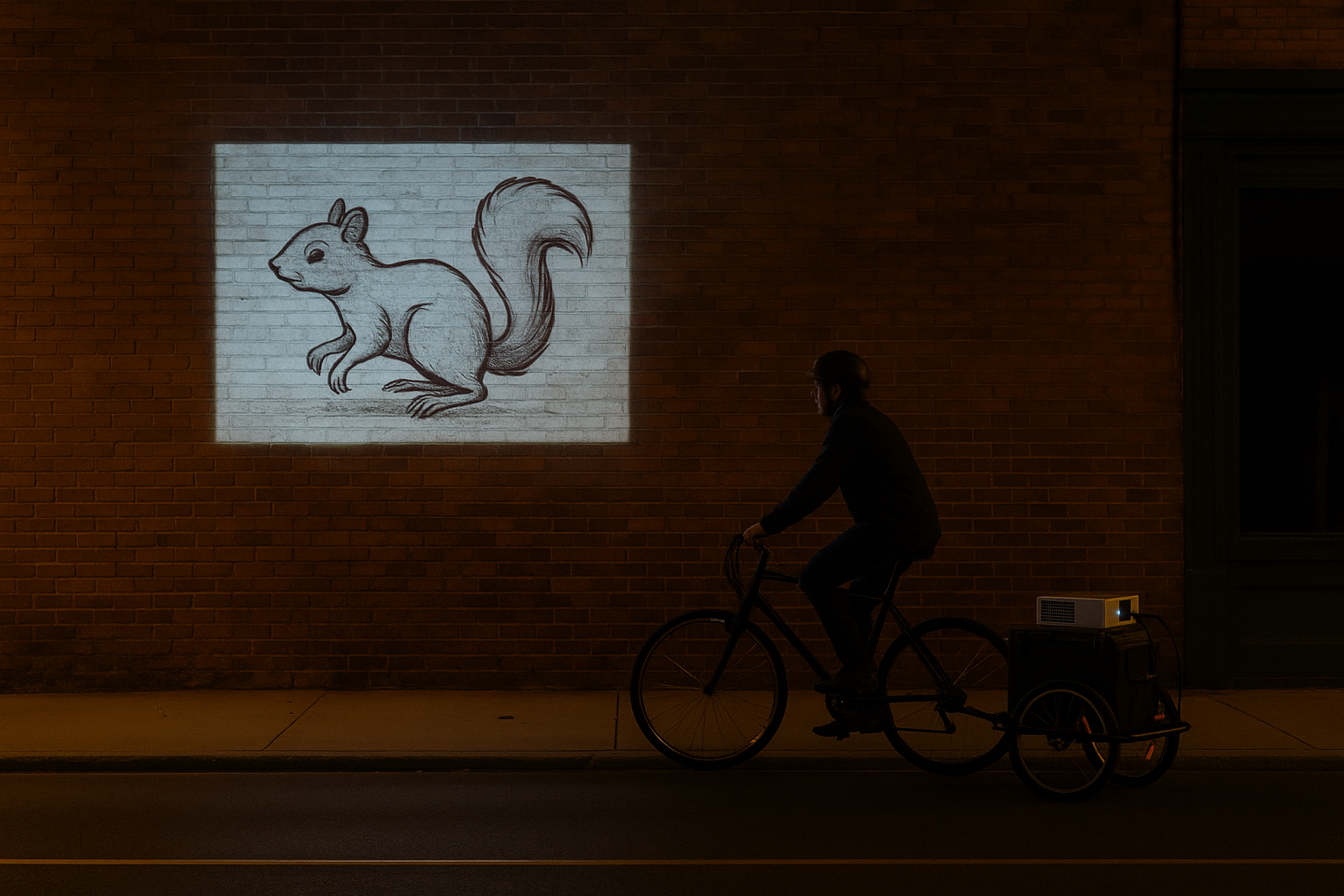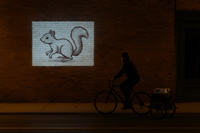Pedal‑Powered Projections: Animations on the Move
A mobile projection‑mapping performance that turns a bicycle + trailer into a roving gallery for ecological animation across downtown Flagstaff. Off‑grid, ADA‑accessible, and designed for spontaneous public encounters.

Overview
The project brings the gallery to the street — projecting endangered species, surreal landscapes, and climate‑inspired imagery onto familiar city surfaces to spark wonder and conversation.
- Self‑contained power (quiet LiFePO₄ battery + inverter)
- Short‑throw, high‑lumen projection for brick, stucco, concrete
- 3–4 evening sorties per night during ARTx
Concept
Mobility and surprise are the canvas. By casting animation into public space, the work reframes streets as a living, communal cinema. It connects Flagstaff to an international lineage of mobile projection — from Beam Bike (NYC) and Noizebro’s horse projection (DC Wall Festival) to Waxheadart’s animated murals and Montreal’s MAPP_MTL — while grounding the content in Northern Arizona’s ecology and climate narratives.
Team
- Andy White — Technical support & safety logistics
- Graham Hagerty — Trailer fabrication & rigging design
- James Peters — Animation consultation & creative contributions
- Josie Leatherwood — Community engagement & business outreach
- Austin Frick — Technical direction & media playback workflow
Project Reel
Placeholder reel: update to your Pedal‑Powered Projections cut when available.
Process
- Rig Design: custom trailer mount for projector, LiFePO₄ battery, and compact speaker; stabilized with sandbags and reflective safety markers.
- Animation: sequences from sabbatical research — desert tortoise, moth mythology studies, Southwestern Willow Flycatcher, snail darter, and the Katmai bear walk.
- Testing: dusk rides to refine throw distance, brightness, battery life, and audience flow; adjust routes accordingly.
- Engagement: QR codes linking to species notes, captions, and behind‑the‑scenes documentation.

Impact
- Accessibility: free, outdoors, ADA‑friendly; captions and mobile notes provided.
- Community: partnerships with downtown businesses; spontaneous encounters during ArtWalk.
- Ecological storytelling: local species + landscapes connect to global climate conversations.